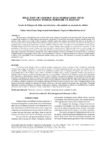Use este identificador para citar ou linkar para este item:
http://www.alice.cnptia.embrapa.br/alice/handle/doc/961660Registro completo de metadados
| Campo DC | Valor | Idioma |
|---|---|---|
| dc.contributor.author | LIMA, L. K. de | pt_BR |
| dc.contributor.author | RAMALHO, M. A. P. | pt_BR |
| dc.contributor.author | ABREU, Â. de F. B. | pt_BR |
| dc.date.accessioned | 2013-07-09T11:11:11Z | pt_BR |
| dc.date.available | 2013-07-09T11:11:11Z | pt_BR |
| dc.date.created | 2013-07-09 | pt_BR |
| dc.date.issued | 2013 | pt_BR |
| dc.identifier.citation | Ciência e Agrotecnologia, v. 37, n. 2, p. 152-158, mar./abr. 2013. | pt_BR |
| dc.identifier.issn | 1413-7054 | eng |
| dc.identifier.uri | http://www.alice.cnptia.embrapa.br/alice/handle/doc/961660 | pt_BR |
| dc.description | The occurrence of precipitation / rain in harvest bean causes damage to the product and reduces the yield. The main alternative to mitigate this problem is to obtain cultivars presenting low germination of beans in the pods under conditions of high moisture. The purpose of this study was to verify if there is genetic variability among the common bean inbred lines that are in the phase of recommendation for the South of Minas Gerais, Brazil in regard to tolerance to moisture after harvest, and identify traits that may be routinely used in selection of tolerant lines to these conditions. Ninety-five lines in the phase of recommendation by the Genetic Breeding Program from UFLA were used. After harvest, a sample of plants from each plot was removed for assessments of seed germination in the pods in a moist chamber and water absorption by pod and seed. Eight days after harvest, another sample was removed to assess seed appearance using a scoring scale. The data were submitted to analysis of variance and estimates of the Pearson phenotypic correlations were obtained among traits. Lines differ in relation to tolerance to moisture at the time of harvest, with those of higher tolerance having lighter colored seeds. The main difficulty in selection of common bean lines for tolerance to high moisture at harvest is the repeatability of the environmental conditions among crop seasons. The alternative is assessing the amount of water absorbed by pods. | pt_BR |
| dc.language.iso | eng | eng |
| dc.rights | openAccess | eng |
| dc.title | Selection of common bean inbred lines with tolerance to high moisture at harvest. | pt_BR |
| dc.type | Artigo de periódico | pt_BR |
| dc.date.updated | 2020-04-22T11:11:11Z | pt_BR |
| dc.subject.thesagro | Feijão | pt_BR |
| dc.subject.thesagro | Phaseolus vulgaris | pt_BR |
| dc.subject.thesagro | Germinação | pt_BR |
| dc.subject.thesagro | Melhoramento genético vegetal | pt_BR |
| dc.subject.thesagro | Seleção | pt_BR |
| dc.subject.thesagro | Umidade | pt_BR |
| riaa.ainfo.id | 961660 | pt_BR |
| riaa.ainfo.lastupdate | 2020-04-22 -03:00:00 | pt_BR |
| dc.identifier.doi | 10.1590/S1413-70542013000200006 | eng |
| dc.contributor.institution | LIDIANE KELY DE LIMA, UFLA; MAGNO ANTONIO PATTO RAMALHO, UFLA; ANGELA DE FATIMA BARBOSA ABREU, CNPAF. | pt_BR |
| Aparece nas coleções: | Artigo em periódico indexado (CNPAF)  | |
Arquivos associados a este item:
| Arquivo | Descrição | Tamanho | Formato | |
|---|---|---|---|---|
| 06.pdf | 112,04 kB | Adobe PDF |  Visualizar/Abrir |









